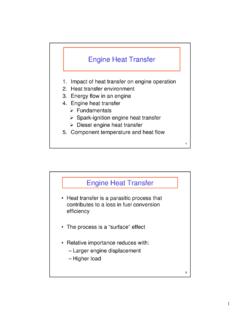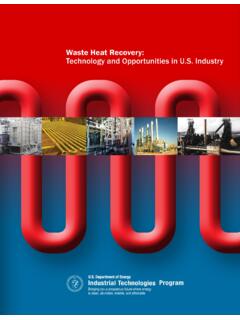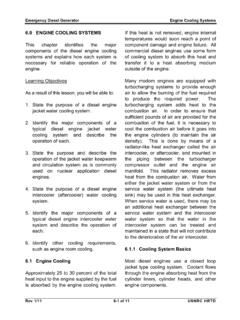Heat Engines And Heat
Found 10 free book(s)Temperature and Heat Temperature, Heat, and Expansion
phys.unm.eduHeat never spontaneously flows from a cold object to a hotter object. –Heat can be made to flow in the opposite direction, but only by doing work on the system or by adding energy from another source. Heat Engines Heat = disordered energy – random thermal motion Alternative statement of 2nd law: –No device is possible whose sole
Chapter 19. Heat Engines and Refrigerators
physics.gsu.eduHeat Engines • A heat engine is any closed-cycle device that extracts heat from a hot reservoir, does useful work, and exhausts heat to a cold reservoir. • A closed-cycle device is one that periodically returns to its initial conditions, repeating the same process over
Combined Heat and Power Technology Fact Sheets Series ...
www.energy.govCombined Heat and Power Technology Fact Sheet Series Reciprocating Engines. Reciprocating internal combustion engines are a mature tech-nology used for power generation, transportation, and many other purposes. Worldwide production of reciprocating internal combustion engines exceeds 200 million units per year. 1. For
Engine Heat Transfer - MIT
web.mit.eduengines are often governed by cold start requirement • SI engine octane requirement: Heat transfer influences inlet mixture temperature, chamber , cylinder head, liner, piston and valve temperatures, and therefore end-gas temperatures, which affect knock. Heat transfer also affects build up of in-cylinder deposit which affects knock. 4
STUDY, ANALYSIS AND DESIGN OF AUTOMOBILE RADIATOR …
www.tjprc.orgAutomobiles, Internal Combustion (IC) engines, Refrigeration system, and Power plants. Different types of heat exchangers are known, in which air is used as heat transfer medium as it is freely and abundantly available, without any disposal issues. In known heat exchangers, flow of air is induced naturally or is aided by the use of one or more ...
Waste Heat Recovery - Energy
www1.eere.energy.govFigure 2 Variation of Carnot Efficiency of Heat Engines as a Function of ∆T 9 Figure 3 Abandoned Recuperator from an Aluminum Melting Furnace 11 Figure 4 (A) Metallic Radiation Recuperator Design (B) Radiation Recuperator Installed At Glass Melter 13 Figure 5 (A) Convection Recuperator (B) Combined Radiation/Convection ...
6.0 ENGINE COOLING SYSTEMS If this heat is not removed ...
www.nrc.govheat exchanger. For most diesel engines, a jacket water discharge temperature of about 180oF is preferred with a temperature rise through the engine in the range of 8 to15oF. 6.1.1.2 Engine Coolant - Water is the most common coolant used in …
THERMODYNAMICS TUTORIAL 5 HEAT PUMPS AND …
www.freestudy.co.ukA heat pump is a device for producing heat so we are interested in the heat given out in the cooler Φ(out). The coefficient of performance is defined as C.O.P. = Φ(out)/P(in) It is usual to find a convenient source of low grade heat for the evaporator such as the atmosphere or a river. The heat is removed from this source and upgraded to higher
Heat Exchanger Fundamentals
d6s74no67skb0.cloudfront.netheat exchangers are not widely used because of the inability to reliably seal the large gaskets between each of the plates. Because of this problem, plate type heat exchangers have only been used in small, low pressure applications such as on oil coolers for engines. However, new improvements in gasket design and overall heat exchanger
REFRIGERATION CYCLE
operations.fnal.govHeat transfer occurs when objects, gasses, or fluids of different temperatures encounter each other. The modes of heat transfer are through conduction, convection, or radiation. Heat Exchanger There are many types of heat exchangers used in cryogenic systems. This discussion will limit itself to the types of heat exchangers used by the Main Ring









